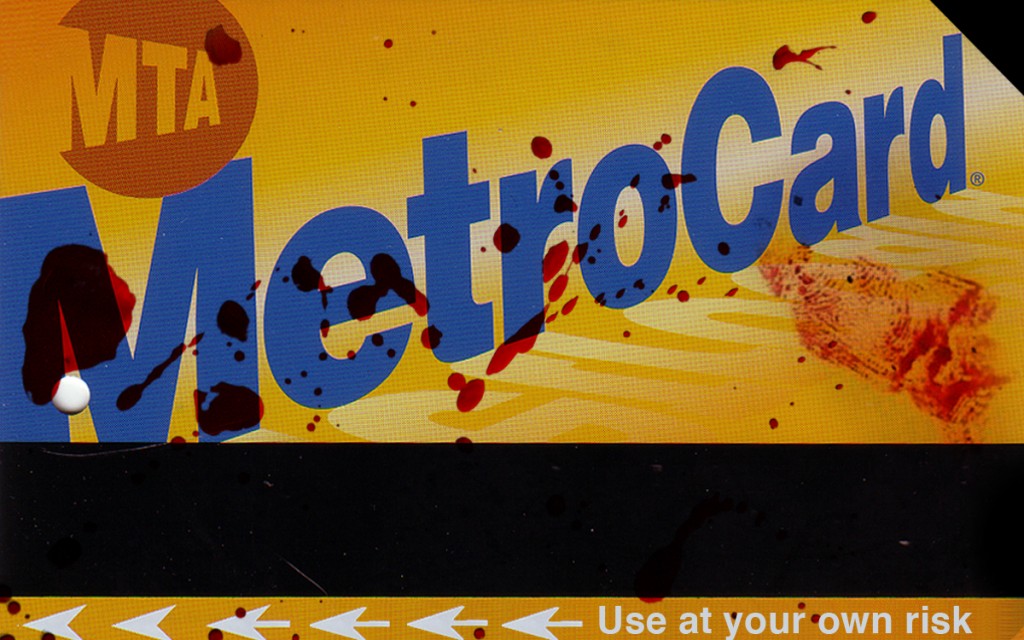
Hoping to sway the New York City Council hearings on subway safety, a local union handed out MetroCards splattered with fake blood to subway riders last week.
The Transport Workers Union Local 100 handed out cards at three different subway stations, which were chosen because of their proximity to concurrent City Hall meetings where metro accidents were on the agenda. In addition to blood stains, the cards also featured a picture of the Grim Reaper on the back and the union’s demands.
“We want to raise awareness of danger on the platforms because there are often fatalities that no one hears about,” said TWU Local 100 spokesman Jim Gannon.
The city reported 55 deaths last year. Though most advocates of subway safety have suggested high-tech barriers to reduce the subway deaths, this union advocates something much simpler.
“While the MTA is proposing numerous high-tech solutions that would cost billions of dollars and take decades to implement, transit workers have a quick, easy and no-cost solution to many of the deaths on the tracks,” Gannon said. “Reduce speeds coming into stations.”
Other suggestions outlined on the back of the so-called “Grim Reaper Cards” included placing transit agents on crowded platforms and using an emergency switch to shut off power.
However, Aaron Donovan, a media liaison for the Metropolitan Transit Authority, rejected these proposals and said they would cause more harm than good.
“The fact is that slowing down trains would create crowding conditions on trains and platforms and would actually create a more dangerous condition,” Donovan said.
Donovan also noted that the number of subway fatalities is minimal compared to the total number of individuals commuting. Last year, the subway system transported approximately 1.64 billion people, and 55 of those individuals were in fatal train accidents.
Despite disagreements, both parties agree that safety is the main priority.
“We want to work with the TWU on an increased public education campaign,” Donovan said, “[such as] updated car cards in 100 percent of cars, paid media campaign, enhanced station announcements, safety flyers in stations, etc., to remind customers to be aware of their surroundings and stay away from platform edges.”
Tisch freshman Valeria Rotella is in favor of any policy that will ensure safer subway transportation.
“I don’t think that the recent accidents on the subway would have been prevented by this policy, but it’s still something,” she said. “But what’s really fascinating is that since these deaths were publicized, I’ve seen people more wary on the subway, myself included.”
A version of this article appeared in the Thursday, Feb. 14 print edition. Fay Lin is a contributing writer. Email her at [email protected].











































































































































